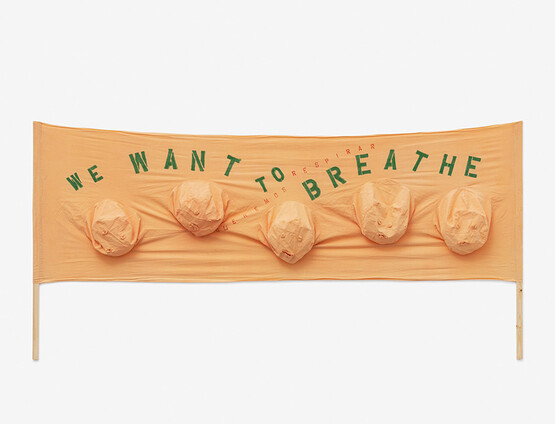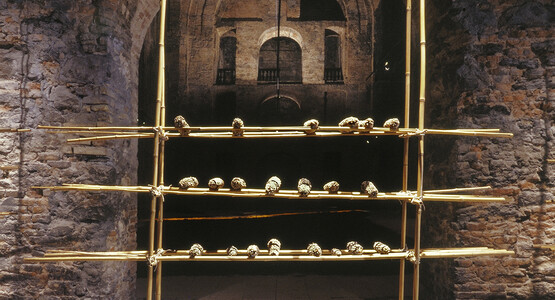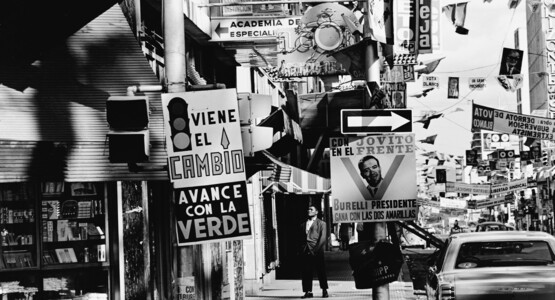The crisis of artistic conditioning: Mário Pedrosa, Frederico Morais and the avant-garde in Brazil (1966–75)
by Marcelo Mari • November 2021
This article examines the critical output of Mário Pedrosa (1900–81) and Frederico Morais (b.1936) during the ‘state of exception’ in Brazil, which was introduced in 1964 after a coup d’état led to the overthrow of President João Goulart. The subsequent military dictatorship issued seventeen major decrees in the following years, including the Institutional Act Number Five (AI-5) in 1968, which by means of censorship mandates and curtailment of civil rights increased repression of the artistic and cultural milieu. Both Pedrosa, at that time a mature critic, and Morais, a young promoter of contemporary art in Brazil, were significant proponents in, and influencers of, cultural debates. They encouraged engagement with new visual languages, examined the crisis of modern art in Brazil and the wider world, and were also critics of new paradigms connected to the advent of mass consumerism.
Discussion of the avant-garde in Brazil in the period of 1966 to 1975 raises key issues in relation to the projects and writings of Pedrosa and Morais. A crucial element of their cultural critique, most notably for Pedrosa, was the role of freedom in artistic expression during the military dictatorship. Pedrosa saw communication and freedom as vital artistic strategies to contrast both the crisis and the voracious assimilation of art into a capitalist market; this became known as his ‘exercise of experimental freedom’ (‘exercício experimental da liberdade’). This idea was later echoed by Morais, who also considered such freedom to be a prerequisite for the survival of art during the dictatorship.
From Modernism to postmodernism: Pedrosa’s exercise of experimental freedom
As a result of American imperialist intervention, spurred on by the fear of communist influences in Goulart’s government, members of the Brazilian armed forces stepped up in support of military intervention and in 1964 the President was overthrown. In reality, there was no such communist influence, but Goulart’s national policies clashed with the interests of North American companies in the country. Goulart vowed to carry out basic reforms to modernise Brazil and was guided by the idea of a Latin America independent of United States policy to the Americas. This provoked a climate of paranoia that heightened political tensions between Brazil and the United States.
With the overthrow of the President, there was a crisis in the autonomy of art and the role of artistic expression in Brazilian society. Through the writings of Pedrosa and Morais, it is possible to understand the mutation of Brazilian art from the ‘Brazilian Constructivist Project’, which had its apex in the construction of the new capital, Brasília, to an increasingly subordinate role, dictated by the rise of what has come to be known as peripheral capitalism.1 Despite this, and despite the contribution of the coup itself to this capitalist economy, the 1960s and 1970s were marked by a great deal of Experimental and Conceptual art production in Brazil. Although they were from different generations, Pedrosa and Morais shared a critical appreciation of artists whose practice was overtly sociopolitical during a time of political upheaval in the country. With artists and critics in exile, a form of art emerged that was radically critical of current circumstances – specifically in the work of Antonio Manuel (b.1947), Hélio Oiticica (1937–80), Artur Barrio (b.1945), Cildo Meireles (b.1948), Lygia Pape (1927–2004) and Lygia Clark (1920–88). With the support of Pedrosa and Morais, and by setting themselves apart from the art market, such artists were able to break free from the burgeoning peripheral capitalist economy.
It would be fair to say that the trajectory of twentieth-century Brazilian modern art was guided by Pedrosa. As an art critic he was active from the 1920s and went on to hold a series of important positions in the art world, including Chairman of the International Association of Art Critics (AICA) and Director of the São Paulo Biennial, which he was instrumental in establishing. He was also very active in politics and founded the Partido dos Trabalhadores (Workers’ Party; PT). Pedrosa was a militant critic of Constructivist art and a supporter of Concrete and Neo-Concrete art. He was also engaged in debates regarding architecture in Brazil, especially the work of Oscar Niemeyer (1907–2012), Lúcio Costa (1902–98) and Sergio Rodrigues (1927–2014). With the collapse of modernisation and the coup, Pedrosa began to research the relationship between Brazilian art and the country’s successive cultural trends. Pedrosa argued that out of conflict a new generation was arising that was capable of confronting the artistic imperialism evidenced in the replication of ready-made consumer models from central countries. These were Brazilian artists who exercised their freedom beyond the constraints of their circumstances. As such, the experimental exercise of freedom came into play.
Even before American popular culture came to dominate the country in the 1960s, Pedrosa was concerned about the rise of the ‘art as big business’ model that was encouraged by galleries, corporations, government institutions and other agents of power in the central countries of capitalism. With the end of an autonomous concept of art that was solely based on formalism, a new vision emerged: the celebration of art as commodity. This type of work, in which conditions external to the artistic dimension were key attributes, became known as postmodern art.
In his essay Crise do condicionamento artístico (The crisis of artistic conditioning), published in 1966, Pedrosa reflected on the circumstances that initially drove a significant shift in the position of art in Brazil in the 1950s. Although formalism was dominant in the Americas in the 1950s and 1960s, after Pop art emerged as a symbol of consumerism, the rise of Experimentalism and Conceptual art brought about new debates that extended beyond the formal. In the 1950s a new international circuit was established, presided over by the United States, which gained ground in the Cultural Cold War. Working across a global stage, the New York art scene populated the idea – already present in the Cold War effort – that society must defend the ‘fortress of freedom’ against the ‘evil’ represented by the advances of communism.2 This Manichean narrative guaranteed a political space for defending modern art while impugning the independence of artists. In the name of ‘freedom’, art was financed by large North American foundations and companies, and as it was transformed into a platform for big business, it came to be seen as big business itself. Pedrosa stated:
We cannot talk about production without talking about the system of labour, forms of labour and, ultimately, forms of creation. Under existing social conditions (mainly in the West), every activity, even the most disengaged, restricted to one’s individual circle, tends to be absorbed by the circle of the so-called productive labour or the labour that produces exclusively for the market.3
According to Pedrosa, in a capitalist socio-economic context, the autonomy of art and the independence of the artist are absorbed into a capitalist mode of production as productive labour, even if they are illusorily sustained as unproductive labour. He argued that the artist becomes the producer of objects to fulfil the request of an ‘increasingly large clientele in an indiscriminate market’.4 In a society of mass production, the consumption of the new – of programmed obsolescence – exceeds the expectations and qualities of the unique object. However, to Pedrosa, art, despite having to comply with the way that products are pushed by the market, was still able to deny an alignment with capitalist society: ‘In its essence, the work of art is not an object for consumption’.5
Pedrosa’s critical trajectory is marked by the belief that art and revolutionary politics are the inseparable elements of the ‘experimental exercise of freedom’.6 In particular, he used this term to describe work with psychological or political connotations that expanded artistic perception beyond traditional media, by, for example, including experiments with the body. This process of making provided a freedom that was not possible in the current conditions of production and reproduction in all forms of capitalism.7 For the artist, it was still possible to break with the status quo and exercise freedom, resulting in an emancipated, autonomous output.
In the 1960s and 1970s, Experimental art and, subsequently, Conceptual art, which desacralised the traditional status of aesthetics, became another mechanism for the reaffirmation of art’s independent character in Brazil. Ideologically, they were more politically than artistically driven, leading to the radicalisation of art practices. The displacement of art from a comfortable position to one facing the harsh reality imposed by the military dictatorship, meant that art production was restricted to a marginal status; it was removed from the art world and market – a market that was insubstantial at the time. As a result, a form of art emerged that was radically critical of the circumstances on the peripheries of capitalism, yet had roots in Experimental and Concrete art.
The epitome of Pedrosa’s experimental exercise of freedom came in 1970, when he saw Manuel’s performance O corpo é a obra (The body is the work) in Rio de Janeiro. Faced with a climate of persecution – often legal imprisonment and death – under the military regime, Manuel submitted himself to the Art Salon of Modern Art at the Museu de Arte Moderne, Rio de Janeiro, as a work of art; he was rejected by the jury. Undeterred, on the opening day of the salon, he performed the work by appearing naked at the museum. As such, Manuel encouraged confrontational dialogue between art and the institution at a time when Brazilian organisations were acting in accordance with the state of exception. Pedrosa stated:
Manuel transcends the purely aesthetic plane of discussion – as a function of a work. It is life itself. One no longer discusses a finished work, but a creative action. It is an eminently avant-garde art. It is an aspect of the cultural revolution, where taboos are broken. The fact that, today, you (Antonio Manuel) have done this, shakes the whole perspective of art, the aesthetic discussion, the ethical discussion […] You discuss everything. And with an enormous authenticity. What Antonio is doing is the experimental exercise of freedom. He is not trying to dominate others. He is saying: ‘This is the way it is’. Total authenticity, which is creative authenticity.8
Brasília and the avant-garde
The city of Brasília was inaugurated in 1960 during the presidency of Juscelino Kubitschek (1956–61) FIG. 1. With civic buildings designed by Niemeyer, it emerged as the apex of Brazilian Constructivism FIG. 2. Geographically in the centre of the country, it also promised a modernisation capable of breaking with the chronic problems of the old coastal capitals, such as Rio de Janeiro, Salvador and São Paulo, with a renewed approach to planning and expansion. The project was a reassessment of the role of the city, housing, the impact of modernisation and environmental responsibility. The scale, aesthetic significance, culture and urbanism of the project was widely debated in an Extraordinary Congress of the International Association of Art Critics in 1959, with the participation of William Holford (1907–1975), Max Bense (1910–1990), Meyer Schapiro (1904–1996) and Giulio Carlo Argan (1909–1992) among others. The critical tradition established at the beginning of the 1950s, including that associated with the construction of Brasília – represented in particular by Pedrosa – had a direct impact on the relationship between art and the public.
By the time the military coup unfolded in the years after the inauguration of Brasília, Pedrosa had become an internationally recognised critic, whereas the young Frederico Morais had begun working only in the mid-1950s. Like Pedrosa, he was a formulator and supporter of the demise of the prevailing Constructivist perspective. They both saw the potential for artists to engage with political reality without relinquishing the desire for a modernised, socialist country. However, during military rule, they were faced with armed opposition to emancipatory politics. Brazilian modernisation adopted authoritarian and destructive overtones; the disciplined character of Brasília was set aside. Instead, what prevailed in modern Brazilian cities were the outcomes of violent laissez-faire, or, in Pedrosa’s words, ‘the solutions of anarchic growth and urban savagery’.9 This evidently formed a kind of dystopian consciousness, which became associated with an inability to transform the status quo.
Examining this brutally unceremonious end to Brazilian Constructivism, Morais noted a parallel between artistic and social ideals.10 In his 1975 text Artes Plásticas: a Crise da Hora Atual (Plastic Arts: the Crisis of the Present Time), Morais emphasised the significance of the new capital city; Brasília was seen as the symbol of a new era. He referenced Kubitschek’s inaugural speech at the 1959 Extraordinary International AICA Congress,
I see, in our meeting, a symbol [. . .] It suggests or vehemently asserts that the technological, economic and social future of this country shall not be constituted without heart and intelligence, as has been the case so many times in the past and in the present, but it shall emerge under the banner of art, the banner under which Brasília was born.11
Writing fifteen years after the inauguration of the city, Morais looked back pessimistically to the positive atmosphere of 1959, concluding that Brasília ‘is a “dawn without sun” [. . .] Brazil hasn’t kept pace with Brasília’s revolution, that is, it has not embraced a utopian perspective. The future of this country is increasingly being built without heart or intelligence’.12
From the mid-1960s the visual arts became the target of violent repression. In 1969 the military censored works of art considered to be overtly political by Manuel, Carlos Vergara (b.1941), Evandro Teixeira (b.1935) and Humberto Espíndola (b.1943), which were to have been included in the fourth Paris Biennial. This triggered an objection by ABCA, led by Pedrosa, which eventually resulted in the mass boycott of the São Paulo Biennial by international artists later that year.13 Pedrosa’s worsening relationship with the military regime reached its peak when he was accused of sending a letter of denunciation to UNESCO concerning the sanctioned use of torture in Brazil, considered to be an act of slandering the country abroad. When questioned, he continued to advocate for citizens who had been arrested and tortured, which led to his prosecution in July 1970. Having been forewarned by the writer Ferreira Gullar (1930–2016), he took refuge in the Chilean embassy. After three months of asylum, he was allowed to travel to Chile, where he briefly participated in Salvador Allende’s socialist government.
The terror inflicted by the military government, following the enactment of AI-5 in 1968 – which suspended all constitutional protections and eventually led to the institutionalisation of torture – laid bare the Brazilian avant-garde movement’s limited awareness of the political crisis.14 However, there were a small number of artists working in this period who demonstrated the importance of politically engaged practice: the painter Rubens Gerchman (1942–2008) and his New Figuration movement; Clark FIG. 3; Oiticica; Pape; the combination of Pop art and Arte Povera in the work of Sérgio Ferro (b.1938); and later, the interventions of Barrio and Meireles. From their work emerged the understanding that art was a discipline beyond the simple assembly of visual elements and the notion of participation became as fundamental in art as it was in politics.
The crisis of the avant-garde
In 1975 Morais published the essay A crise da vanguarda no Brasil (The crisis of the avant-garde in Brazil), in which he analysed the main art initiatives that had taken place in Brazil between the end of the Estado Novo (Third Brazilian Republic; 1937–45) and the early 1970s.15 In this essay Morais defined avant-garde activity as ‘permanent updating’. However, in his view, with the informal end of art movement ‘isms’, the concept of an avant-garde closely linked to the issue of formal innovation became obsolete. According to Morais, the ideas behind avant-garde art had changed: ‘Art is action and engagement. The avant-garde artist is not restricted to making works. He strives to impose ideas that are evidently not constrained to the aesthetic field’.16 Thus, Morais used the term avant-garde to describe both Brazilian Experimentalism of the 1960s and Conceptual art from the succeeding decade. He outlined the principles that guided the promotion of Brazilian avant-gardes and the way they were implicated in the historical and social construction of the country and its successes and failures.
For Morais, the crisis of the avant-garde was triggered by the country’s political climate from the 1970s onwards. Furthermore, the introduction of the art market instigated a reclassification of artistic production, exacerbating the crisis; in particular, there was a revaluation of easel painting by Modernism’s first-generation artists, including Tarsila do Amaral (1886–1973) and Vicente do Rego Monteiro (1899–1970). Morais applies at least two meanings to the term ‘crisis’. On the one hand, the term refers to the crumbling of Brazilian Modernism; on the other, it references the increasing lack of freedom in the creation of art and disruptions in the Brazilian visual art system – the exile of critics, persecution of artists and discrediting of official institutions – in favour of initiatives mainly aimed at promoting an incipient local art market.17
According to Morais, years of systematic repression, in which artists, intellectuals and militants were attacked, murdered or forced into exile, threatened the discipline of art as a whole.18 As a consequence, he wrote, there was a profound shift in the role and function of the art system in Brazil. Before the coup, an informed public and a tradition of art criticism had provided a basis for the development of a distinctively Brazilian avant-garde, which also relied on the support and growth of its modern institutions. However, as a result of the crisis in art created by political repression, artists, as well as architects and intellectuals, engendered or promoted practices that were based on a new understanding of the modern.
In his book Artes Plásticas na América Latina: Do Transe ao Transitório (Plastic Arts in Latin America: From Trance to the Transient; 1979) Morais revisited the relationship between sociopolitical factors and aesthetics in the construction of Brasília. He argued that, in addition to factors in Brazil at the time, the dynamics of modernisation were guided by the interests of two imperialist powers: the USSR and the United States. In the Western world this engendered the imposition on the periphery of artistic models derived from the centres of power. The international circuit was contaminated by the logic of economic power and ideological influence. For Morais, this new imperialism possessed a symbolic dimension.19 Although modernisation had exhausted its utopian perspective, the same could not be said of the Brazilian artistic community where Constructivist sympathies with socially transformative potential endured. It is clear that Morais’s analysis was influenced, if not compromised, by the adverse conditions facing the country at a time when conservative modernisation had taken hold of Brazil and the world.
Critique in exile
Under the military regime art criticism floundered. Many artists and intellectuals subordinated themselves to a diplomacy of half-words and to the new established order, sometimes reaping private benefits. After the promulgation of AI-5, art was positioned solely as a commodity. Politicised critique was replaced by one that was impotent or aligned with the established order. Thus the exercise of art criticism became increasingly precarious in Brazil in the 1960s and 1970s; many critics left Brazil, including of course Pedrosa. The writings of exiled critics resonated with the opinions of artists who remained in the country throughout the 1960s – such as Manuel, Claudio Tozzi (b.1944) FIG. 4, Meireles and Barrio. The initiatives and reflections of critics outside the country encouraged innovative output within Brazil, including the performance Isso é que é (That’s what it is) by Manuel, in which the artist urinated in a bottle of Coca-Cola FIG. 5, and Pape’s sensory manifestations FIG. 6. In Situação T/T, 1 Belo Horizonte, Barrio filled cloth bundles with leftover meat and debris and slashed them with a knife FIG. 7 FIG. 8. Displayed in public places, these works made reference to the murders and other crimes of the dictatorship in Brazil. Simultaneously, Morais, who remained in the country, along with the artists Roberto Magalhães (b.1940), Farnese de Andrade (1926–96) and Espíndola, developed an alternative form of criticism that was linked less to the political reality and more to general protests against capitalism, consumerism and the coercive power of social institutions.
Although these two approaches differed, they were united against the same enemy. The unofficial slogan of the time shared by artists and intellectuals was freedom and liberation: liberation from imperialism; liberation from the socioeconomic conditions that relegated people from the southern hemisphere to a peripheral condition; liberation from the political oppression imposed by the military dictatorship and United States imperialism; and the freedom necessary to change national behaviours and traditions.
There were a number of major cultural events in Brazil in the second half of the 1960s, after the military coup, such as the exhibitions Opinião 65 (Opinion 65) at the Museu de Arte Moderne, São Paulo (MAM) in 1965 and the seminar Propostas (Proposals), which was held in the auditorium of the Biblioteca Municipal de São Paulo in December 1966, and the exhibition Nova Objetividade (New Objectivity) held at MAM in 1967. Initially, proponents of Brazilian Experimentalism championed a close connection between art, everyday life and politics – as seen in Oiticica’s Parangolés FIG. 9 FIG. 10 and the arrival of Pop art in Brazil in 1960. This coincided with the rise of mass media – both nationally and globally – and of the correlation between different products made for the widespread consumption of images.
Oiticica’s artistic output in particular is revealing of the contradictions that defined Brazilian social reality and the crisis of the avant-garde: the idea of social reframing by drawing on the guiding principles of architecture and the visual arts. With the configuration of this utopian perspective, Brazilian art critics and artists were faced with the degeneration of the reforms proposed by the liberalising state. Over time the younger generation, working alongside older artists, came to fill the void left by the political or auto-exile of several members of the Constructivist generation.
Oiticica carried out several collective actions that gathered artists of the time around a common enemy. Along with other artists, he began to think about the display of art beyond museums and traditional modern art spaces. The use of public spaces allowed the social dimension of art to become more evident, creating a new and significant relationship between art and the lives of people.20 Oiticica’s participation in Apocalipopótese (Apocalypse) – a demonstration in Aterro do Flamengo park, Rio de Janeiro, alongside favela dwellers, which questioned the divisions of a class-based society – inspired subsequent projects. For example, his installation Tropicália FIG. 11 was devised as an allegory of modernisation that contradicted national ideals. The title was intended as a play on stereotypes of Brazil as a tropical paradise; the work comprises sand, palms, parrots and colourful makeshift structures. On the other hand, the structures were inspired by the favelas of Rio da Janeiro; as such the work both portrays and critiques the artist’s native country.
In São Paulo in 1967 a series of flags and banners erected at the corner of Avenida Brasil and Rua Augusta by the artists Nelson Leirner (1932–2020) and Flávio Motta (1923–2016) were seized on the orders of the city’s district attorneys. This stimulated marches against the dictatorship, which coincided with a proliferation of street art events at weekends and, in 1968, Morais curated a month of public art. As part of this event Oiticica staged Apocalipopótese, a project that involved simultaneous happenings and no explicit concept apart from encouraging the participation of other artists; political criticism and interaction with the public were the dominant elements. The public was encouraged to participate in several works: Lygia Pape’s Ovos (Eggs), cloth boxes from which a person breaks out; Manuel’s Urnas quentes (Hot Urns) FIG. 12, wooden boxes that participants broke open to reveal such slogans as ‘Down with the Dictatorship’; a dog show led by the musician Rogério Duarte; and Oiticica’s capes worn by samba performers.21
Redefining the avant-garde
How can we define the Brazilian avant-garde in the post-coup years, in which artists endured and witnessed such an escalation of state terrorism? By the beginning of the 1970s the term ‘avant-garde’ was being used as a direct reference to Experimentalism in contrast to the national popular tradition represented by political or socially engaged art. As well as favouring content over form, Experimental artists used a didactic approach as an attempt to get closer to the masses – in search of the valorisation of national identity inscribed in Brazilian popular culture. This affirmation of local cultural values was adapted and incorporated by the dictatorship’s propaganda and ideological discourse, resulting in such tropes as the figure of the Indian, the North-eastern peasant, the carnival and the notion of Brazilian sensuality.
In the 1970s, while decisions were being made by the Brazilian dictatorship in response to United States corporate interest in South America – which helped to consolidate the ideological primacy of the art market – Brazilian intellectuals and artists were operating against this officialising tendency. When curating events, Morais’s intention was to blur the distance between contemporary art, its social significance and the general public. To bring art and people closer together was his central aim. In April 1970 Morais organised the event Do corpo à Terra (From Body to Earth) in the Belo Horizonte municipal park, Minas Gerais, to coincide with the exhibition Objeto e Participação (Object and Participation), held at the nearby Palácio das Artes. The event incorporated various happenings and actions that referred to the political situation in Brazil. From Body to Earth was organised according to a new artistic ideology: one linked to the ephemeral, to experience and to new understandings, in which the public and art were placed in open dialogue. Understanding perceived national political fragmentation went hand-in-hand with addressing the tensions between art and the public. In 1970 Morais wrote a manifesto that expressed the attitude of artists working under the dictatorship:
The statement may be reckless. But I believe that there is no idea of nationhood without automatically including the idea of art. Art is part of any project of nation. It is part of the national consciousness. In another sense, one could say that art directly touches the problem of freedom – art – is, in fact, the experimental exercise of freedom. It is also clear that the creative exercise will be all the more effective the greater the freedom.22
Morais’s manifesto directly references Pedrosa’s experimental exercise of freedom. However, while they agree on this point, Morais rejects restrictions on artists – a seemingly critical stance in a state of exception, but one ultimately difficult to realise – whereas for Pedrosa the conceptualisation of freedom necessitates a radical consideration of the critical character of art in the face of conformism and capitalism. He believed that the role of art was to present an alternative model of society, based on autonomous, emancipated work.
For Morais, the works by artists such as Barrio and Meireles presented in From Body to Earth signalled the end of the avant-garde in Brazil. The avant-garde had been transformed into a rearguard, that is, after the political coup it functioned as a kind of insufficient reaction to events; for Morais it also came to signify a denial of possibilities. From this duality, we see the negation of modern paradigms as a way of transcending them in a move towards a new status for art and life. According to Morais:
Anti-art adds political contestation to the contestation of art itself (above all its traditional categories). The new artists of this trend have in Oiticica and Lygia Clark, both living abroad, their models, but their art is increasingly conceptual. They create rituals, celebrations, perceptive exercises, challenges of the senses, expeditions, appropriations, ecological works. Suddenly emerging and deriving from other sectors, they produce wild art, which tends to nomadism (preferably outside museums and galleries) and anonymity. They act unpredictably, like guerrilla fighters, without warning, appearing from the most unexpected places.23
This was the new face of anti-art in Brazil: a type of art that denied bourgeois customs and explored artists’ experience of the political and social crisis. Artists immersed themselves in life, using the unexpected as tactics to position themselves against the existing state of things. Barrio’s blood bundles, Manuel’s Hot Urns and Meireles’s Molotov cocktails made using Coca-Cola bottles FIG. 13 leave no doubt as to the link between artists and politics in the vast left-wing 1970s resistance in Brazil. The work of these artists was a form of radical criticism during the years of civil-military rule, in which expectations of transformation were declining vertiginously.
Conclusion
The events curated by Morais between 1968 and 1975 took into account the ephemeral nature of works of art, in order to bring art and life closer together. Unfortunately, it only had a limited impact on the establishment in Brazil. Morais defended art criticism as a creative activity, and as a curator he dealt with the production of artistic experiences. He believed in the optimism of behavioural transformations triggered by art in times of dictatorship. For him, art practice went beyond ethical and moralising realms, resulting in strong political positioning across both Experimental and Conceptual art in Brazil.
As highlighted by the artist and activist Carlos Zílio, the greatest enemy of artists was the dictatorship. With the support of United States imperialism, the question of Brazilian popular identity re-emerged, to redirect the debate on visual arts, culture and politics in Brazil.24 This was an attempt to ward off the fetishising of national icons that became instrumental symbols of a national ideology fabricated by the dictatorship: a winning football team; Pelé; and the first TV transmission of the World Cup in colour, in 1970. In addition to radical art practices, the situation in Brazil also provided fertile ground for conformist art, which was symbolic of a ‘virtuous’ Western form of capitalism. This would not be resolved until the end of the cycle of civil-military dictatorship and the beginning of the New Republic in 1985 that signalled the re-democratisation of Brazil.
Acknowledgments
The author thanks Michael Asbury for his suggestions and questions, which were important to the development of this article.





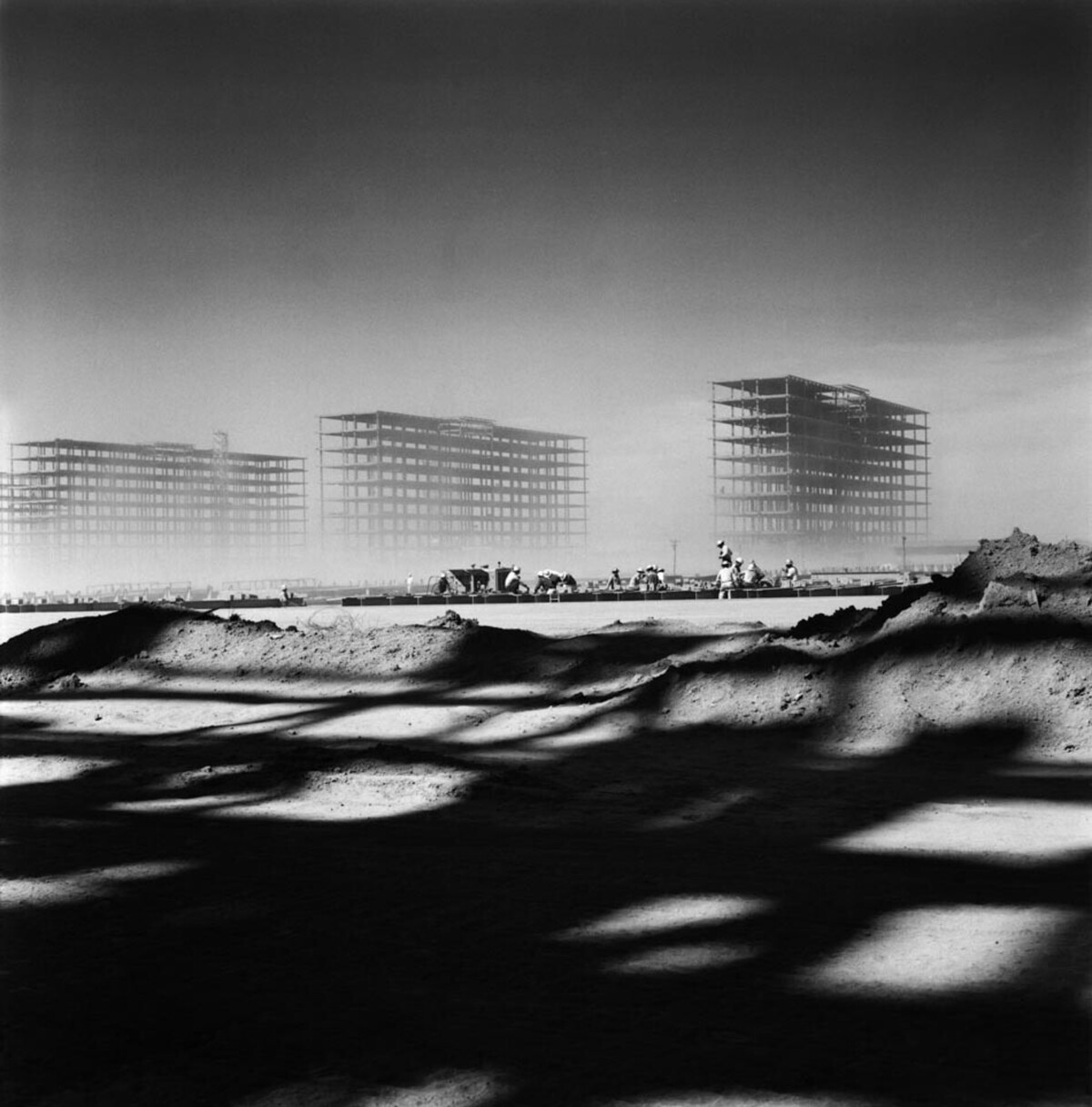


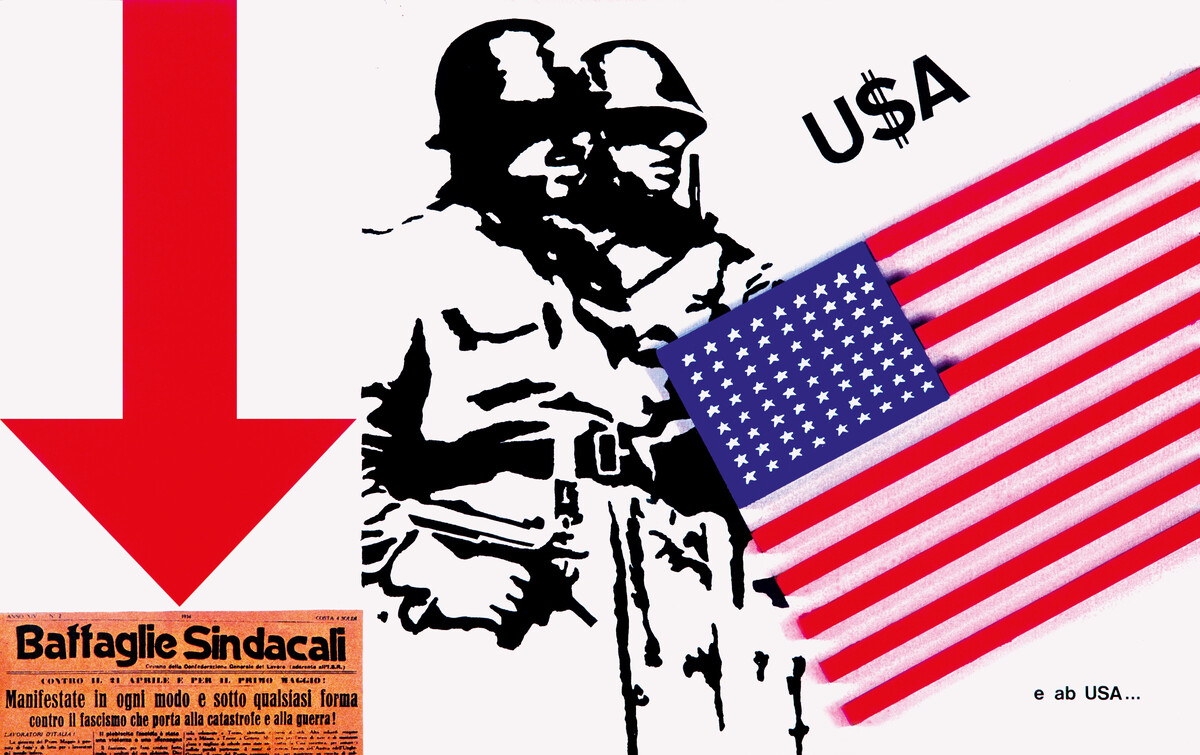
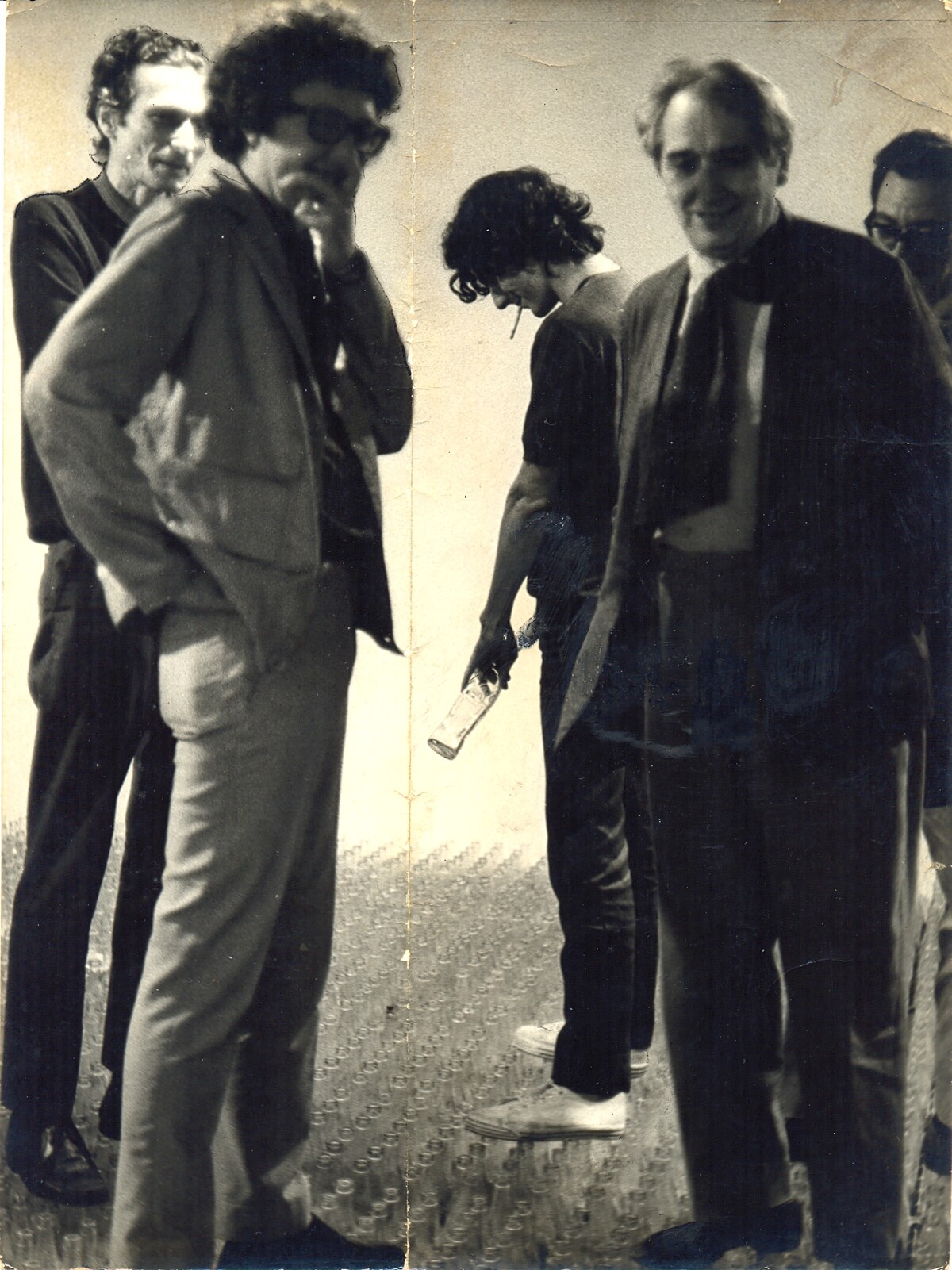
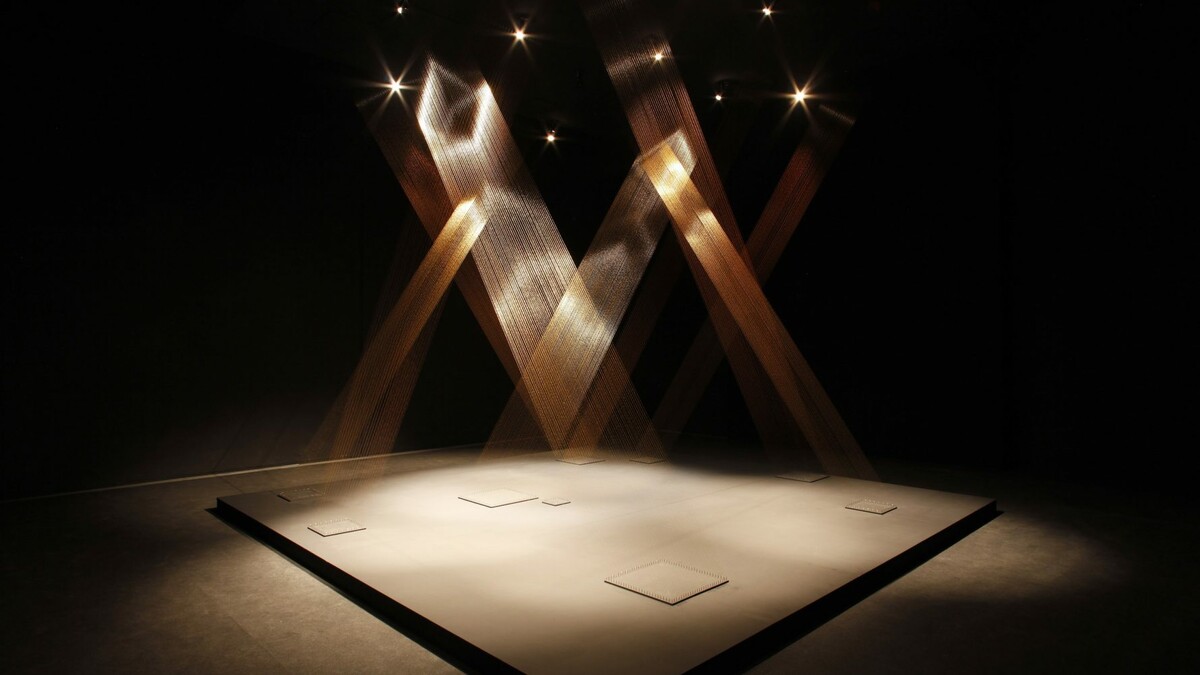
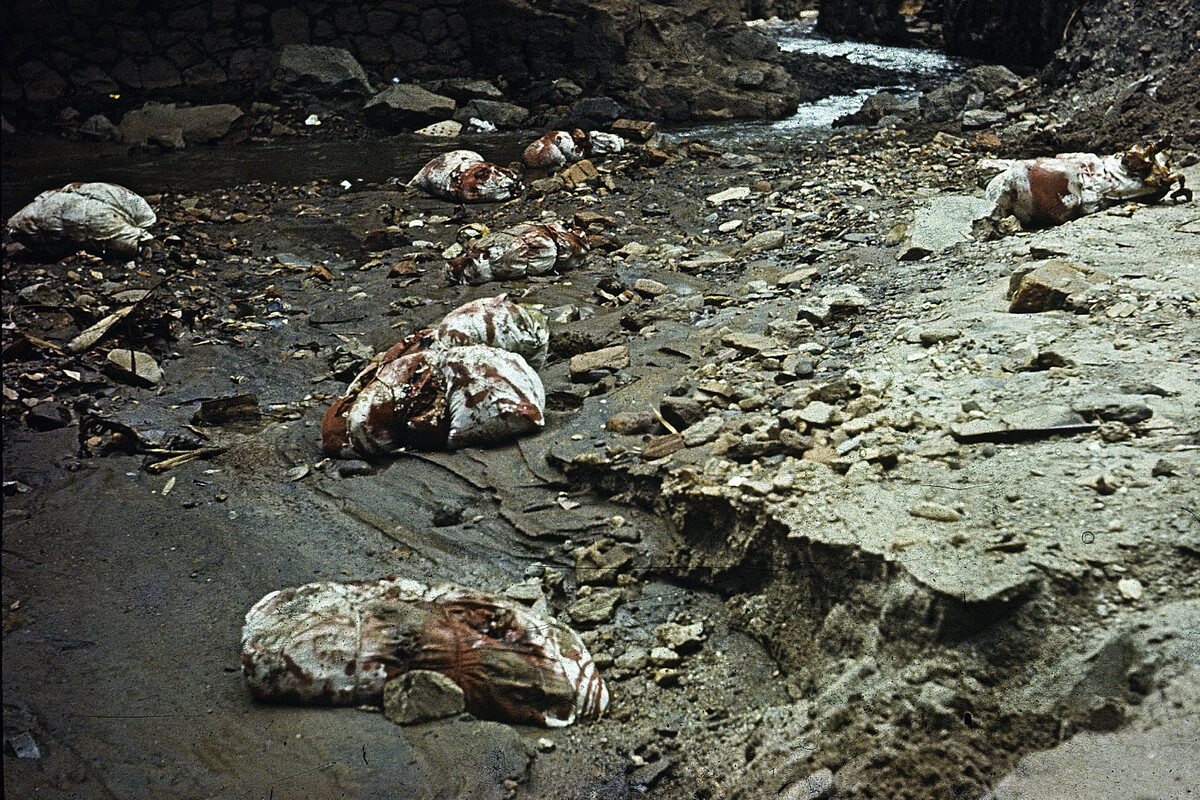

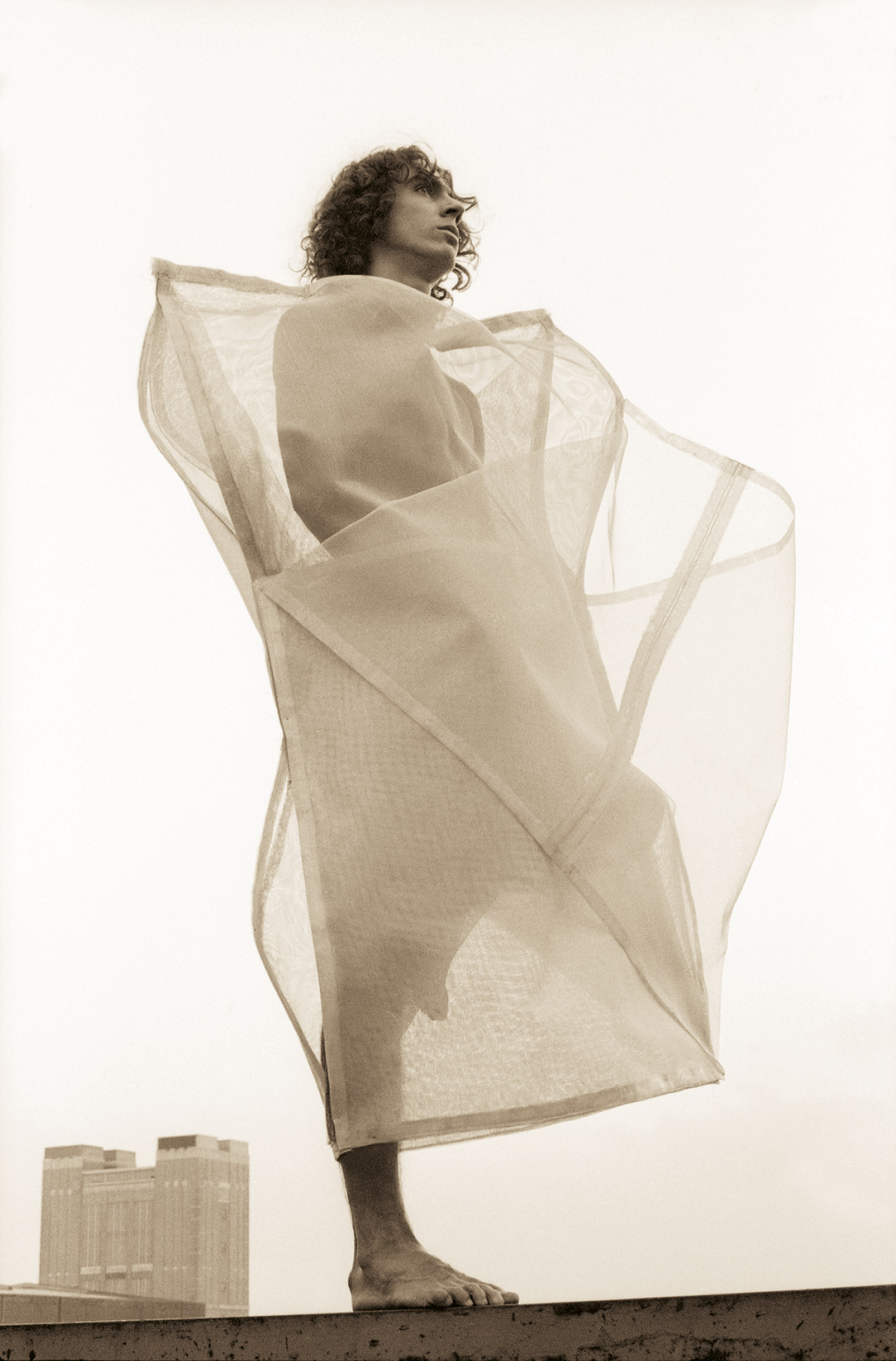
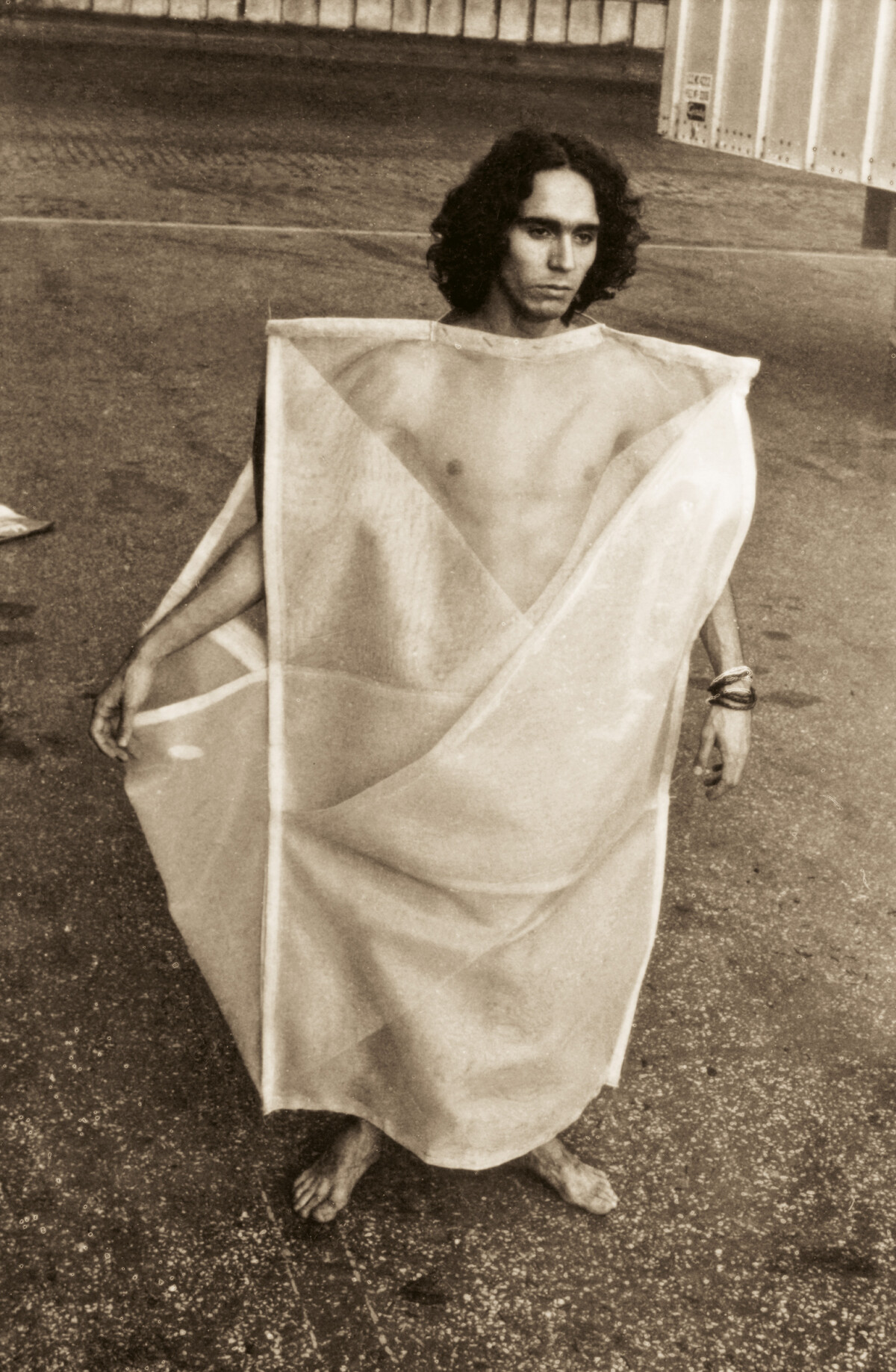
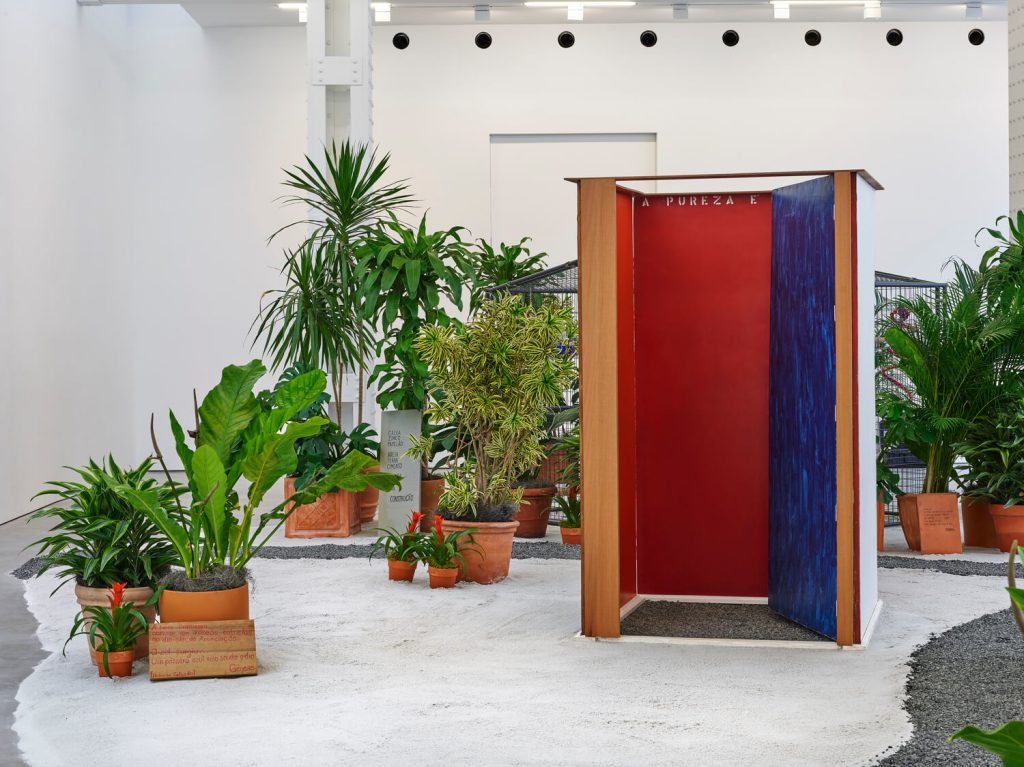
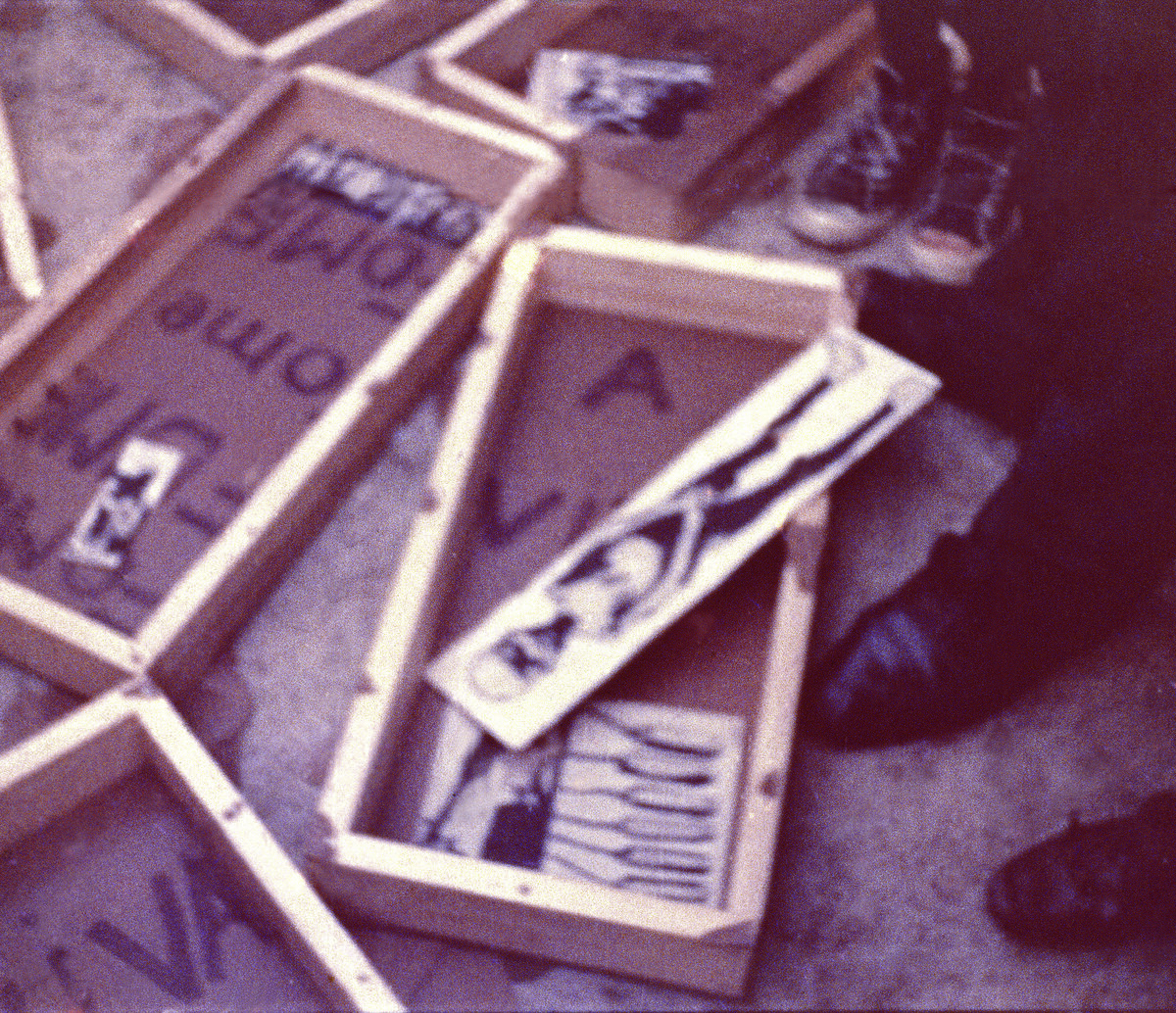

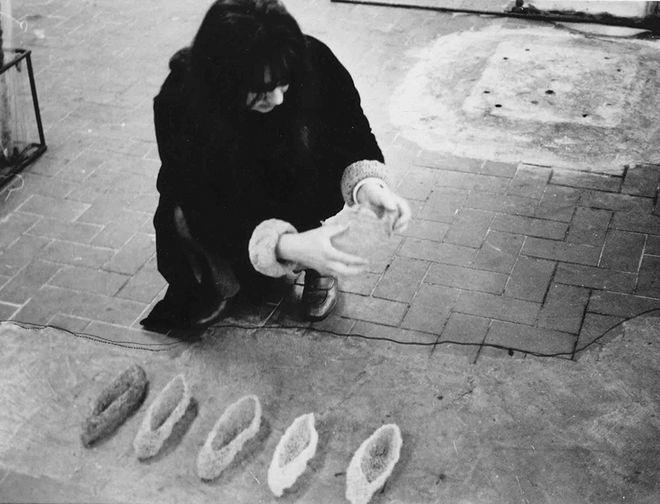
-11_feature.jpg)
